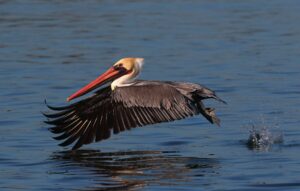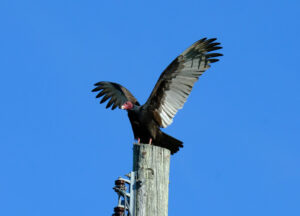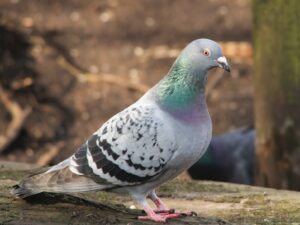Jul 15, 2011 UPDATE: The Planning Commission approved these standards at their meeting on July 14, 2011.
Every year in North America, a billion birds die by colliding with windows, buildings, and communication towers, according to some recent studies. Many of these deaths could easily be avoided by doing things like tinting windows and turning off lights between dusk and dawn. In San Francisco, we have more than 400 bird species and we are right on the Pacific Flyway, a major migratory route bringing another 250 species through our skyscraper obstacle course.
A proposed new city policy, up for a hearing tonight, would aim to better protect those birds.
“We’ve studied the 30 years of research that has been done on building safety and have really tried to base the policy on science,” says Erika Lovejoy, city project manager and environmental planner. “We’ve looked at the places with the biggest threat. Birds behave a certain way around certain buildings under certain circumstances, like where there’s vegetation reflecting in the window. We really looked at the science where birds hit the most and looked at the most effective ways of fixing this issue.”
Building on standards already in place in Toronto, New York City, Chicago and Minnesota, the San Francisco Planning Commission has outlined a set of standards to certify buildings as “bird safe.”
This voluntary certification applies both to improving the safety of current buildings as well as for the construction of future buildings. City officials are trying to discourage unsafe architectural features, such as large reflective windows adjacent to parks or large windows within the height range that most collisions occur (the bottom 60 feet). They also consider the location of the building, at least a quarter mile from major stopover spots like Golden Gate Park and outside of fog-prone areas.
“People should care in San Francisco because we’re located in the midst of the Pacific Flyway so the city has real hazards for birds,” says Noreen Weeden, conservation project manager at Golden Gate Audubon Society. “The proposed standards are realistic and provide a safer migration for birds.”
In 2008, San Francisco became one of the first cities in the country to implement a “Lights Out” program, which urges building owners to turn lights off from dusk until dawn during the migration of over 250 species through San Francisco from February through May and August through November. Birds use the light from the moon and the stars to navigate during their long journeys, but the city lights can drown out this key navigational resource. Bright lights also confuse migrating birds and lead to collisions. By turning off the lights building owners cut both bird casualties and energy costs.
Lovejoy says residents can even help save birds in our own homes by moving potted plants a few feet away from windows, putting decals on windows, or putting up a screen.
On Thursday, July 14, the planning commission will hold a public hearing for the adoption of the proposed Draft Standards for Bird-Safe Buildings. The hearing is at 1 p.m. at San Francisco City Hall, Room 400.
Download the complete draft of the standards, or read more online at the Standards for Bird-Safe Buildings web site.
Comments on the proposal can be sent to erika.lovejoy@sfgov.org, fax at (415) 558-6409, or mailed to Erika Lovejoy, San Francisco Planning Department, 1650 Mission Street, Suite 400, San Francisco, CA 94103.

.jpg)



